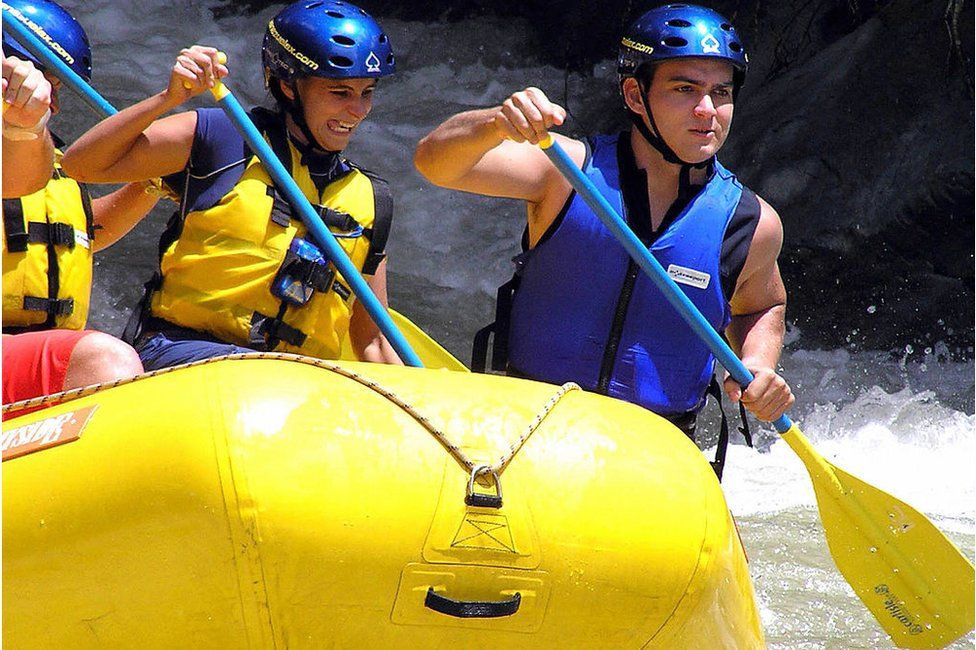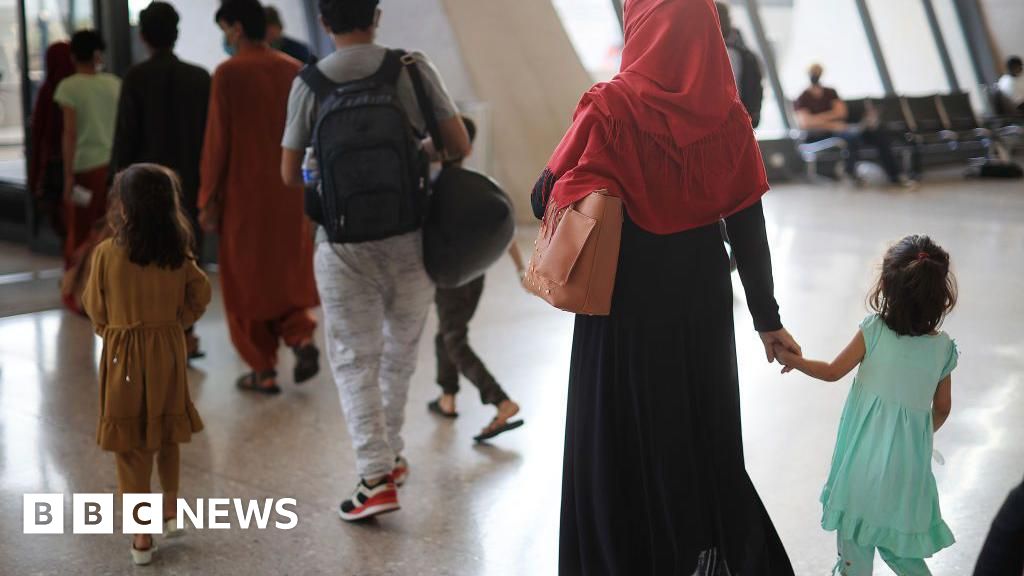ARTICLE AD BOX
By Navin Singh Khadka
Environment correspondent, BBC World Service
 Image source, Getty Images
Image source, Getty Images
Climate change is making adventure tourism more challenging and sometimes riskier, travel industry bodies, tour operators and experts have told the BBC.
Rockfalls on some Alpine hiking routes this summer, wildfires that threatened campsites in southern Europe and the US, and landslides and floods affecting South American rafting rivers can all be seen as impacts of climate change, they argue.
"The tourism sector is increasingly challenged by extreme weather events caused by climate change," says Dirk Glaesser, director of sustainable development for the United Nations World Tourism Organisation (UNWTO).
"The risks in adventure and nature-based tourism are different now, they require constant monitoring," says Christina Beckmann, a climate expert with the Adventure Travel Trade Association (ATTA), whose members include 1,000 national tourism boards and 33,000 individuals.
"The impacts of climate change mean we need to keep our eyes more open to respond to the changes, and keep reviewing our risk assessments."
Falling rocks and ice
Guides say rockfalls caused by fast-melting ice - that otherwise keeps rocks and boulders stable - are the biggest risk for mountain tourism.
"Many places have now become no-go areas, mainly because of rockfalls and collapsing glaciers that have destabilised them," says Jean-Claude Razel, a mountain guide who also teaches ecological transition at France's prestigious ESCP university.
"Winter sees less snowfall these days and whatever snow and ice are there, they quickly melt."
Several routes on the Alps were suspended by guides this summer because of frequent rockfalls, while a glacier collapse in the Dolomite region of the Italian Alps killed 11 hikers in July.
Image source, Getty Images
Image caption,A rescue helicopter flies over Italy's Punto Rocca glacier, after its collapse in July
In August, a French mayor said that climbers on Mont Blanc should pay a deposit to cover rescue and possible funeral costs.
The chairman of Nepal's Mountain Guides Association, Ang Norbu Sherpa, says changes are occurring much faster than he and other professional guides had expected.
"You now see a stream flowing at Everest camp II. The rocks are exposed everywhere, and they are falling everywhere," he says.
He adds that seracs - pinnacles or ridges of ice on the surface of a glacier - are increasingly seen hanging precariously over climbers' routes in the Himalayas and the Alps. Crevasses, meanwhile, are widening, Mr Sherpa says, to the extent that some can no longer be crossed.
Campsite wildfires
Wildfires led to the evacuation of hundreds of campers in Greece, France, Spain and California during this summer's heatwave - highlighting a problem not only for adventure tourists, but for any camper who wants to get close to nature.
The number of such incidents has been on the rise in recent years, "and it will become more common now," says Victor Resco de Dios, professor of forest fires and global change at the University of Lleida in Spain.
Image source, Getty Images
Image caption,Five campsites had to be evacuated because of a forest fire near La Teste, in southern France, in July
Prof Resco co-authored a study last year that counted 473 wildfire-related fatalities in Europe between 2008 and 2021 - and a quarter of the victims were tourists.
In one incident in 2018, 103 people died in Mati, a Greek coastal village. It was vulnerable because it was partly surrounded by forest, like many other spots popular with tourists, Prof Resco says.
"So these areas need to develop and implement plans to minimise risks and make evacuation routes, to ensure that they do not become mousetraps."
Image source, Getty Images
Image caption,A burned car in the Greek village of Mati, after the 2018 fire in which 103 people died
Wildfires are even making wildlife-watching riskier in the Amazon rainforest and the Pantanal wetlands in South America, according to ATTA vice-president Gustavo Fraga Timo.
Troubled waters
Scientists have warned that landslides will become more frequent in many mountain regions, due to changing rainfall patterns, and rafting guides say this is already happening.
Landslides pose obvious risks for rafters on mountain rivers, and according to Alejandro Buzzo, a Venezuelan board member of the World Rafting Federation, they are making some rivers hard to navigate.
"That makes rivers change their course, with shallow depth, which makes rafting almost impossible," he says.
Image source, Getty Images
Image caption,Shallow water and "low flow" can bring rafting to a halt
The impact of climate change can also be felt in non-mountainous areas, Mr Buzzo says, where intense rainfall may cause abnormal flooding.
"The Orinoco, the world's widest river, rose by an unprecedented 18m two years ago and that led to some small islands being wiped out while new ones were created," he says. "I lost my own rafters' camping site, which was a small island, and it was swept away by the river."
In some areas, such as northern Spain, rafters have also suffered from low rainfall. Fermin Larrea, a guide who conducts rafting trips on the river Gállego, says water flow is now often just half of what is needed, and that periods of "low flow" have been getting longer.
In addition, the temperature of the water has risen by 5C in recent years, causing guides to suffer more frequently from a foot fungus that causes painful peeling of the skin.
"Very few guides used to have this before and now almost all of us have it. We continue to use anti-fungus cream as we used to before, but it is less effective."
'Close to nature'
Adventure tourism accounts for about 30% of all tourism according to ATTA, and some tour operators say this figure is rising.
"After having to remain indoors for so long because of Covid, people want to travel now and many are now willing to go close to nature," says mountain guide Jean-Claude Razel.
"That's good, but given the increase in climate change impacts it can be bad if it is done without adequate preparation and carefulness."

 2 years ago
106
2 years ago
106








 English (US) ·
English (US) ·